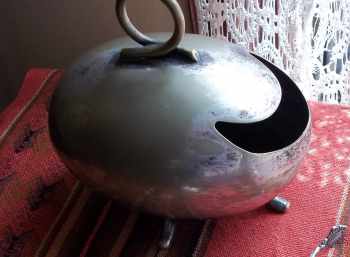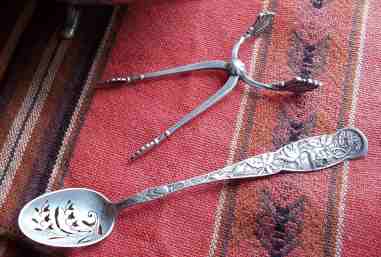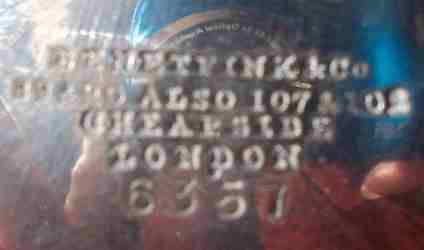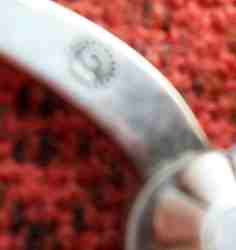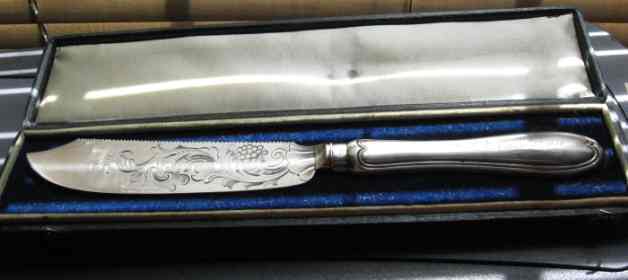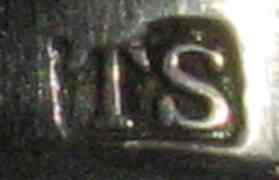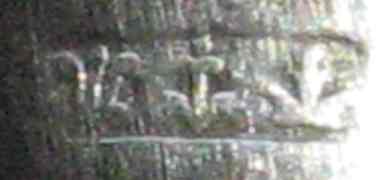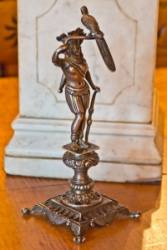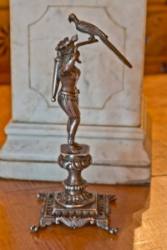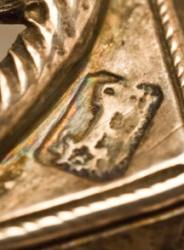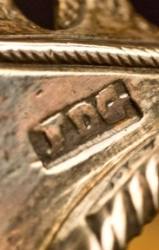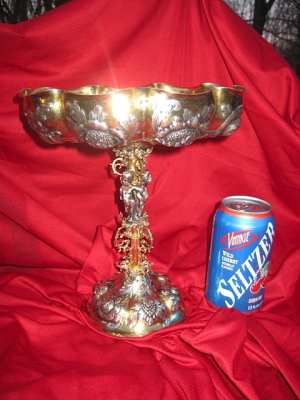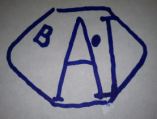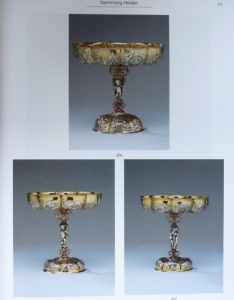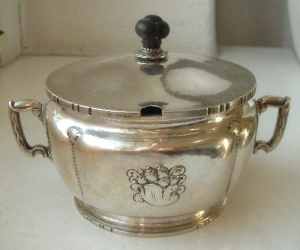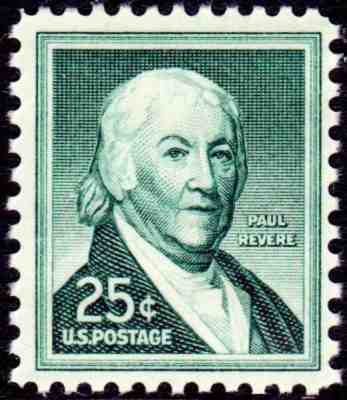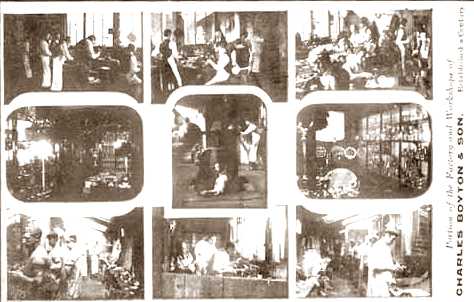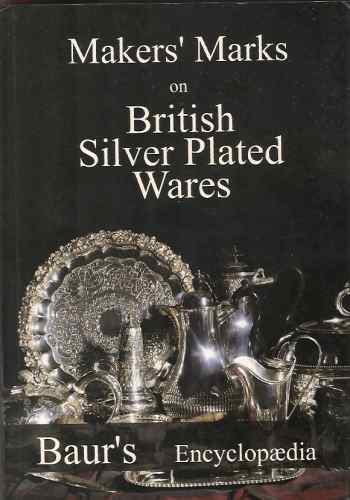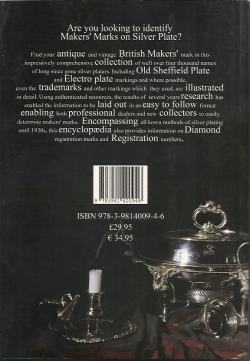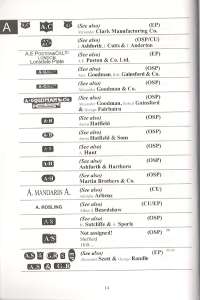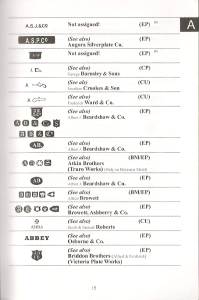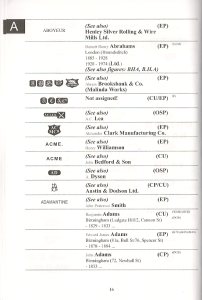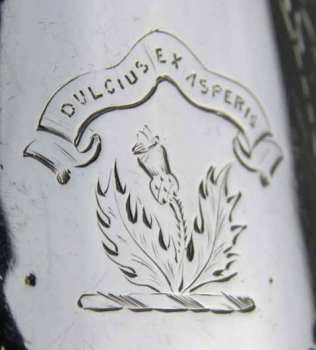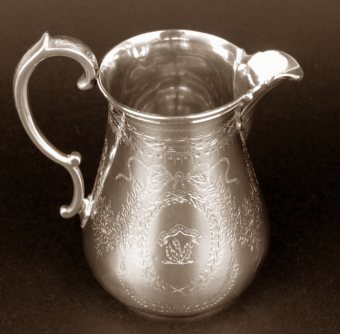 newsletter # 99 August 2012
newsletter # 99 August 2012www.ASCASonline.org SITE MAP
email: silverassociation@yahoo.it
YOUR GUIDE TO AUGUST NEWSLETTER:
articles
new
members
members' window
|
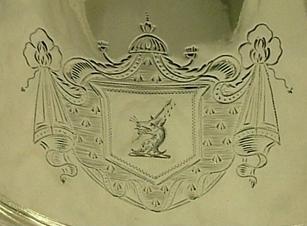
Joanne and Emmett Eldred
present:
|
New members
Welcome to new ASCAS members:
Carol Ann Cox - USA
Carol Dobson - USA
Peter Ekstein - France
Deborah Lindley - USA
Jozef Mac - Czech Republic
Debra Miller - USA
Luigi Rizzica - England UK
|
top page -
page map |
Members' Window # 99
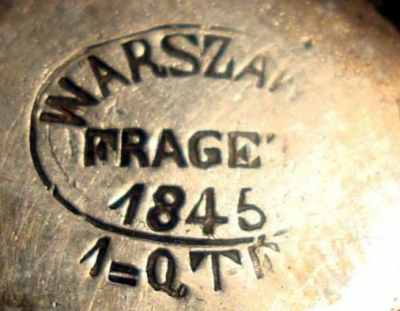
Dr. David N. Nikogosyan
presents:
|
Mail to ASCAS: e-mail silverassociation@yahoo.it
Lesley Bannatyne writes:
...I have a hollow silver piece with the following marking on
the underside:
Bennet Fink & co.
85&90 ALSO 107&108
CHEAPSIDE
LONDON
6357
There are also tongs and spoon but the implements do not have
the same stamp, in fact they may be independent of the hollow
piece and even from each other. The tongs have a small mark.
I'm sure your readers will know more than I do, since it's a
mystery to me. The closest I can find is a "spoon warmer" but
none on the web look like this one. Do you know of anyone who
can tell me what it is used for?
Thanks
Lesley Bannatyne
Linda Palmer writes:
... I would really appreciate any help that you or your members
could give me.
I purchased a cake knife/saw which is engraved with AKG to EMJ
October 18th 1854.
The Makers Mark is TS. The hallmarks look somewhat like a W, an
anchor, and a Fleur De Lys.
I am including pictures of the knife and the marks in the hope
that someone will be able to shed some light on the maker and
where it was made, and if it is Sterling or Plate Silver.
I have been doing a lot of research, but so far have come up
empty.
Thank You for your help,
Linda Palmer
The knife is plated metal, not sterling silver. The maker
is Thomas Sansom, active from 1808 at Norfolk Street, Sheffield
(UK) as cutler and manufacturer of Old Sheffield Plate
Giorgio Busetto
Replies to questions
Leslie Koelsch
receives this answer about her silver toothpick holder
(see July 2012 Newsletter)
Oskar M. Zurell writes:... I made some deep research to the 'Portuguese' question of Leslie
Koelsch. Here follow my result:
The toothpick-holder isn't from Portugal - he has one of the
Pseudo-Assay-marks for 'Porto'; but being used in Brazil during
the last quarter of the 19th century. The maker "IDG" is
actually unknown.
There exist a similar question - look to:
http://www.925-1000.com/forum/viewtopic.php?f=8&t=5583
In that case with a 'crowned L', even so being used in Brazil as
one of the Pseudo-Assay-marks for 'Lisbon', during the last
quarter of the 19th century.
That maker "TAP" is even so actually unknown.
Oskar M. Zurell
John Strynkowski
receives this answer about his gilt centerpiece
(see July 2012 Newsletter)
Postnikov writes:... The maker's mark belongs to Theodor Heiden (Father), Munich, Court
jeweler of the Bavarian Kings. I enclose the marks of his son,
also a famous smith in Munich. Some photos of similar objects -
very nice and very sought after.
Congratulations!
Postnikov
Jörg Müller-Daehn through Oskar Zurell writes:... Attached you would find two images of a lovely little sugar bowl in the typical style of the Munich Baroque Revival; dimensions: 10
by 15 cm (4 by 6 inches). It seems that this object should be dated around 1910 to 1920.
Interesting is here the better visible struck word-mark of 'Th.Heiden' in a 'Fracture' letter-type; still continued since the German
"Gründerzeit" (from around 1870 on, or earlier).
So the shown Flower- or Fruit-bowl seems to be a product of Theodor Heiden, from Munich. As usual in the trade, it could be of course even
so a self signed but forwarded object of another producer. The time span of origin of this object could be around 1890 (Since 1 January
1888 were these German fineness marks obligatory).
Kind regards,
Jörg Müller-Daehn
"A PAGE per MONTH"
In this column we presents a page obtained from makers'
brochures, books, auction catalogs, advertising or whatever
other printed paper, related to silver, that may be of interest
for ASCAS members.
The images will be published at a "low resolution" level and for
private and personal use only
"A WORD per MONTH"
In this column we
present an abstract from a page of the "What is? Silver
Dictionary"
courtesy of


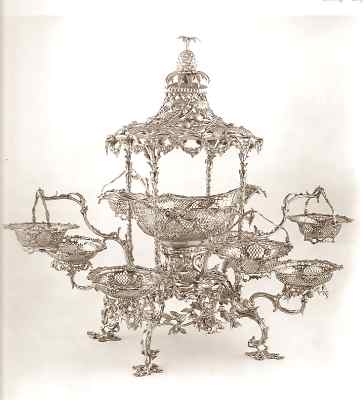
|
EPERGNEThe epergne is a centerpiece introduced from France
to England c. 1715. Its frame could be dressed with
selected component parts depending on the meal or the
course being served.
|
"A SILVERSMITH per MONTH"
In this column
we present marks, information and history of silversmiths and
silver manufacturers.
This column is published under the kind permission of Giorgio
Busetto's website

CHARLES BOYTON & SON LTDThe activity was founded by
Charles Boyton who was apprenticed in 1807 to William
Seaman, Hull's Street, St. Luke's. He registered his
first hallmark in London Assay Office in 1825 (free in
1827).
|
"A BOOK ON MY SHELF"
In this column we present books, new
or ancient, dealing with silver in all its aspects (history,
marks, oddities...). This isn't a "book review" but only a fair
presentation of some useful "tools" that anyone may have in the
shelf of his bookcase.
ASCAS members are invited to contribute to this column
(click to enlarge images)
In the "book on my shelf" of this month ASCAS presents:
"A CREST per MONTH"
In this column we present images and descriptions of Crests and Mottoes of British, Irish and Scottish families as engraved on silver items.

Custom Search
Closing our August 2012 edition of ASCAS Newsletter I hope you have appreciated its content.
Your comments, suggestions and advice will be of great help.
My thanks to Lesley Bannatyne, Joanne and Emmett Eldred, Dr. David N. Nikogosyan, Linda Palmer, Postnikov and Oskar M. Zurell for their invaluable contributions.
Giorgio Busetto
Secretary
ASCAS is a community of people having a common
interest in antique silver.
|

